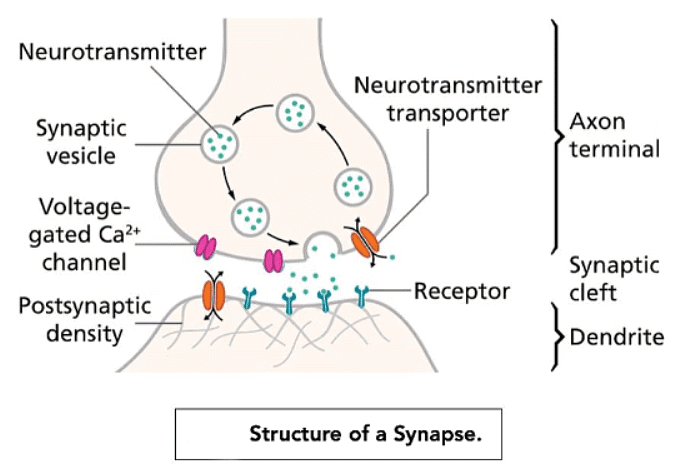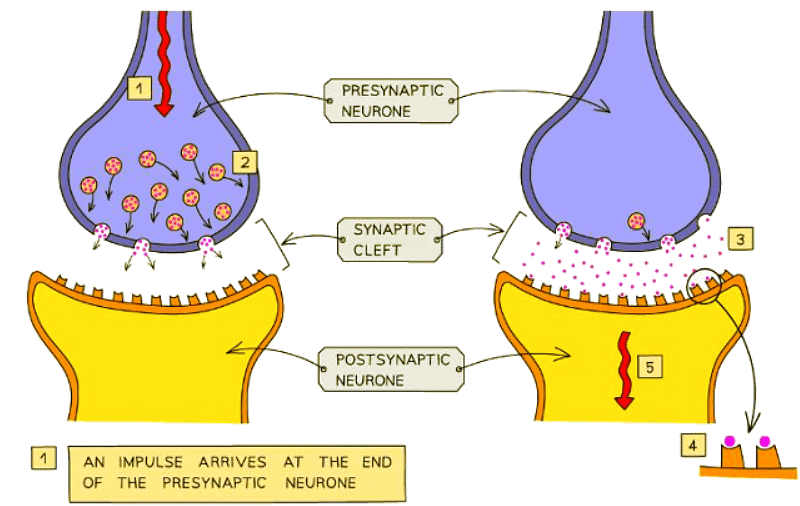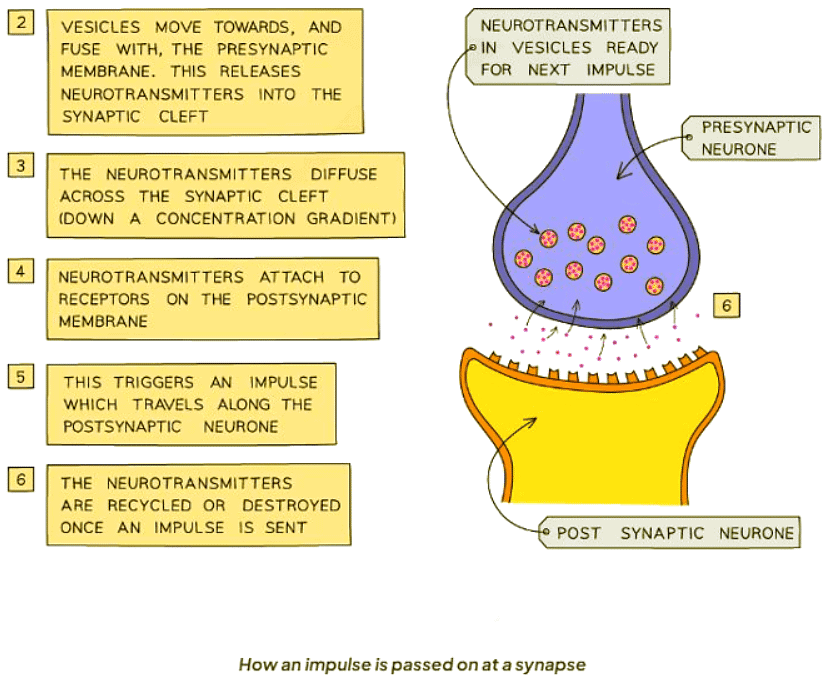Year 11 Exam > Year 11 Notes > Biology for GCSE/IGCSE > The Synapse
The Synapse | Biology for GCSE/IGCSE - Year 11 PDF Download
Structure of a Synapse
- The junction between two neurons is known as a synapse.
- A synapse is a specialized connection that allows neurons to communicate with each other.
- At the synapse, electrical signals are converted into chemical signals for transmission between neurons.
- The synapse plays a crucial role in the nervous system by allowing for the integration of signals and coordination of responses.

Synapses & Neurotransmitters
- Neurons never physically touch each other
- The small gaps between neurons are known as synapses
- Electrical impulses travel along the first neuron's axon
- When an impulse reaches the presynaptic neuron's nerve-ending, it releases chemical messengers called neurotransmitters
- These neurotransmitters cross the synaptic gap and bind with receptor molecules on the second neuron's membrane (postsynaptic membrane)
- This binding stimulates the second neuron to generate an electrical impulse that travels down its axon
- Neurotransmitters are then broken down to prevent continuous stimulation of the second neuron, which could lead to repeated impulses
- Synapses ensure that nerve impulses only travel in one direction, preventing confusion in the nervous system
- The synapse is unique in the nervous system as it involves chemical messaging rather than purely electrical signaling, making it a target for drug interactions
- Neurons communicate with each other through synapses, which act as junctions allowing the passage of signals from one neuron to another. This process involves a combination of electrical and chemical signaling to ensure efficient and one-way communication within the nervous system.
- For instance, when you touch a hot surface, sensory neurons carrying this information trigger a series of events at the synapse, ultimately leading to the sensation of pain and the reflex action of pulling your hand away. This intricate process highlights the crucial role of synapses in coordinating our body's responses to various stimuli.


Question for The SynapseTry yourself: What is the role of synapses in the nervous system?View Solution
The document The Synapse | Biology for GCSE/IGCSE - Year 11 is a part of the Year 11 Course Biology for GCSE/IGCSE.
All you need of Year 11 at this link: Year 11
|
110 videos|158 docs|34 tests
|
FAQs on The Synapse - Biology for GCSE/IGCSE - Year 11
| 1. What is the structure of a synapse? |  |
Ans. A synapse is the junction between two neurons where communication occurs. It consists of a presynaptic terminal, a synaptic cleft, and a postsynaptic terminal.
| 2. What role do neurotransmitters play in a synapse? |  |
Ans. Neurotransmitters are chemical messengers that transmit signals across the synapse from the presynaptic neuron to the postsynaptic neuron, allowing for communication between neurons.
| 3. How do synapses function in the nervous system? |  |
Ans. Synapses allow neurons to communicate with each other by transmitting electrical or chemical signals. This communication is essential for processes such as learning, memory, and motor control.
| 4. What happens if there is a disruption in the function of a synapse? |  |
Ans. Disruptions in synapse function can lead to neurological disorders such as Alzheimer's disease, Parkinson's disease, and schizophrenia, as communication between neurons is compromised.
| 5. How can the function of synapses be modulated? |  |
Ans. The function of synapses can be modulated through processes such as synaptic plasticity, which allows for changes in the strength of the connection between neurons in response to activity and experience.
Related Searches

















